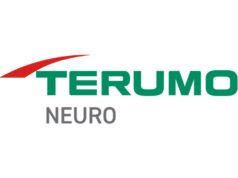
First-in-man results of the Versi Retriever (NeuroVasc Technologies) in acute ischaemic stroke patients with large vessel occlusions demonstrate a promising safety profile and efficacious revascularisation rates. The study—recently published in the Journal of NeuroInterventional Surgery—was carried out by senior author Satoshi Tateshima, UCLA Medical Center, Los Angeles, USA, and colleagues.
Tateshima and colleagues acknowledged that thrombectomy using existing stent retriever devices has been recognised as a first-line therapy for acute ischaemic stroke due to large vessel occlusions in the anterior circulation. However, they noted that in vitro studies (also authored by Tateshima) shed light on certain caveats of conventional stent retrievers. According to the authors, tortuous anatomy can force them to collapse or become stretched—losing capture of the thrombus, while an acute angle in the internal carotid artery or the middle cerebral artery has been found to correlate with lower success rates in mechanical thrombectomy.
Given these findings, the authors aimed to report on the first-in-man experience with the Versi Retriever in patients with acute ischaemic stroke. The stent of the Versi Retriever is made of nitinol and possesses 2–4 staggered articulating segments, helping to prevent its collapse by facilitating opening instead of narrowing during retrieval.
Tateshima and colleagues carried out a single-centre, single-arm, first-in-man registry under institutional review board control, in order to evaluate the efficacy and safety of the Versi Retriever. All patients with acute ischaemic stroke due to large vessel occlusion were consecutively enrolled between September and November 2017. The inclusion criteria required intravenous t-PA to have been previously ineffective. The clinical and procedural data were retrospectively analysed, including: National Institutes of Health Stroke Scale (NIHSS) scores at both admission and discharge; modified Rankin Scale (mRS) prior to onset, at discharge and at 90-days, angiographic data and adverse events, with angiographic results after the procedure—self-graded based on the Thrombolysis in Cerebral Infarction (TICI) scale by each operator.
In total, 11 patients with a mean age of 69.4 years were treated with the Versi Retriever. The median NIHSS score on admission was 16 (IQR: 10–34), while the occluded vessel was located in the anterior circulation in 81.8% of patients. Revascularisation rates of TICI 2b–3 and TICI 3 at final angiogram were achieved in 100% and 63.6%, respectively. Additionally, a favourable functional outcome (modified Rankin Scale 0–2) at 90-days was obtained in 72.7%. Moreover, the authors reported that no symptomatic intracranial haemorrhage occurred and no procedure-related complication was observed.
Irrespective of these positive findings, Tateshima and his team acknowledged a particular shortcoming of the study, in that it was a retrospectively reviewed single-centre case series with a small sample size. Given this, the authors noted that the results may not prove the clinical value of the unique design of the Versi stent.
Regardless, Tateshima and colleagues were able to conclude that the results from this first-in-man consecutive case series demonstrate the safety and efficacy of the Versi Retriever in acute ischaemic stroke patients with large vessel occlusions. Yet, taking into the account its unproved clinical value, they acknowledged that further in vitro and large clinical studies are necessary in order to confirm the true performance of the device compared with the current existing stent retrievers.












